The Butterfly Betta is a beautiful and unique fish native to Thailand. It is also known as the Siamese fighting fish or betta splendens. The Butterfly Betta is a member of the Osphronemidae family and is closely related to the gourami.
The Butterfly Betta is a popular aquarium fish because of its beautiful colors and patterns. The fish can be found in various colors, including red, blue, green, purple, and orange. The most popular color is blue.
It gets the name from its beautiful, iridescent wings, which resemble those of a butterfly. These fins are long and flowy and can span up to 2.5 times the length of the fish’s body.
This freshwater fish is among the wide varieties of bettas kept as pets. Butterfly Bettas are peaceful fish and make good tank mates for other peaceful fish. They can be kept in a community tank as long as no other bettas are present.
This guide will teach you everything you need to know about Butterfly Bettas, including their habitat, diet, care, and tank mates.
So without further ado, let’s learn all about Butterfly Bettas!
Table of Contents
- Species Summary
- Butterfly Betta Care
- Food & Diet
- Diet Foods To Avoid
- Butterfly Betta Tank Size
- Water Parameters
- Filtration
- Substrate
- Water Conditioners
- Plants
- Heating
- Lighting
- Fertilizers
- Co2 Systems
- Decorations
- Other Tank Accessories
- Water Changes
- Cleaning The Tank
- Cleaning The Filter
- Testing The Water
- Common Possible Diseases
- Signs That Your Butterfly Betta Is Sick
- Preventing Diseases
- Treatment And Medications Of Diseases
- How To Choose A Healthy Butterfly Betta
- Tank Mates
- Fish To Avoid
- Advantages Of Having Butterfly Betta In Your Tank
- Disadvantages Of Having Butterfly Betta In Your Tank
- Wrapping Up
Species Summary
| Scientific name | Betta splendens. |
| Common names | Butterfly Betta, Siamese fighting fish |
| Family | Osphronemidae |
| Color | Blue, orange, red, yellow, green |
| Origin | Thailand, Cambodia, and Indonesia |
| Size | 2.5 to 3 inches |
| Life expectancy | Up to 5 years |
| Habitat | These fish are native to the slow-moving waters of Thailand, where they can be found in rice paddies, canals, and ditches |
| Behavior | They are peaceful fish that make good tank mates for other peaceful fish. Initially, they can be shy, but they will quickly adjust to their new environment |
| Minimum tank size | 5 gallons |
| Water type | Freshwater |
| Water Temperature | 70°75°F |
| PH range | 6.8-7.0 |
| Water Hardness | Soft to medium |
| Activity Level | Moderate |
| Sociability | Community fish |
| Tankmates | Peaceful fish |
| Gender Differences | Male bettas are more colorful than females. Females have shorter fins than males |
| Temperament | Aggressive male |
| Care Level | Moderate |
| Compatibility | Other small freshwater fish |
| Breeding | They can be difficult to breed in captivity. |
| Diet | The Butterfly Betta is a carnivore that feeds on small insects, crustaceans, and worms |
| Feeding frequency | 1 to 2 times per day |
The Butterfly Betta is a tropical fish from Thailand’s waterways. In the wild, they can be found in stagnant pools of water, rice paddies, and slow-moving streams.
The scientific name for the Butterfly Betta is Betta splendens. They are a member of the Osphronemidae family, which includes other popular aquarium fish such as the gourami and the betta.
There is a wide range of bettas available, but the Butterfly Betta is one of the most popular due to its unique coloration and patterns.
They are available in various colors, including blue, green, orange, purple, and red. Enthusiastic aquarists are constantly introducing new color morphs to the hobby.
The Butterfly Betta has a labyrinth organ that allows them to breathe from the water’s surface. This is an adaptation that will enable them to survive in stagnant pools of water where there is little dissolved oxygen.
In the wild, bettas are known to be aggressive towards each other and often fight to the death.
However, they can be peaceful fish in captivity and make good tank mates for other peaceful fish. Initially, they can be a little shy, but they will quickly adjust to their new environment.
It is like the male betta turns aggressive during the mating season. For this reason, it is best to keep them in their tank or with other peaceful fish that are not of the same species.
The cost of a Butterfly Betta fish varies depending on the color and pattern. They are typically priced between $10 and $20. But, you can find them for as little as $5 or as much as $30.
Butterfly Betta Appearance
The Butterfly Betta is a beautiful fish that is available in a wide range of colors and patterns. They have long fins that can range in color from blue to green to orange to purple to red.
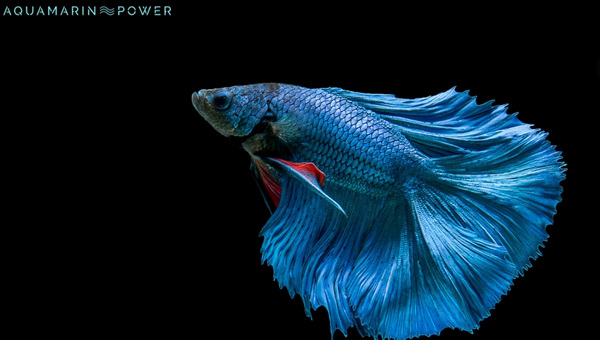
As it befits its name, it is shaped a little like a butterfly with its long fins and slender body. The colors that are seen most often are blue and green.
However, there is a wide range of color morphs that are being introduced by enthusiastic aquarists.
In addition to their bright colors, they also have patterns that can include stripes, spots, or a marbled effect.
The fins of the Butterfly Betta are long and flowy. The males have longer fins than the females. The fins of the male can be up to twice as long as those of the female.
The female bettas also have shorter fins that are not as colorful as the male. However, they can still be quite beautiful fish.
If you notice that the fins of your betta are shorter than usual, it could be a sign of poor water conditions. Make sure to check the water quality and make any necessary changes.
When bettas are first introduced to a new tank, their fins are often shorter than usual. This is because they are stressed and need time to adjust to their new environment.
Butterfly Betta Size & Growth Rate
The size of a Butterfly Betta fish can vary depending on the particular strain. However, most of them will reach a maximum size of 2.5 to 3 inches.
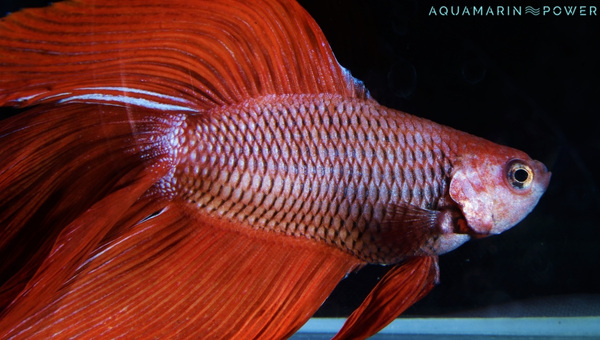
The growth rate of Butterfly Bettas is relatively fast. They can grow up to 1 inch per month if they are given the proper diet and living conditions.
Butterfly Betta Lifespan
The lifespan of a Butterfly Betta fish is typically five years. However, with proper care, they can live up to 7 years.
They are relatively easy to care for if you provide them with the proper diet and living conditions. They are hardy fish that can withstand a wide range of water parameters.
Butterfly Betta Breeding
To breed Butterfly Bettas, you will need:
- A pair of Butterfly Bettas
- An aquarium
- Aquarium plants
- Spawning mops or java moss
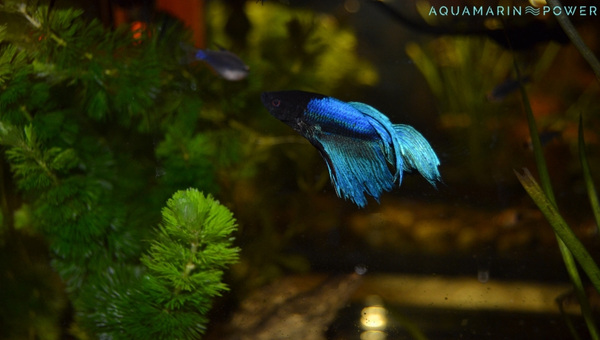
The steps to breeding Butterfly Bettas are:
- Choose a pair of healthy Butterfly Bettas. The male should have long fins, and the female should be plump.
- Set up the breeding tank. The tank should have an area for the male to build a nest and plenty of hiding places for the fry.
- Place the pair of Butterfly Bettas in the breeding tank.
- The male will build a nest out of bubbles and plants.
- When the female is ready to lay her eggs, she will release them into the nest.
- The male will then fertilize the eggs.
- The fry will hatch in about 3-5 days.
- Once the fry is free swimming, they should be fed a diet of baby brine shrimp or micro worms.
- The fry will grow quickly and be ready to move to their own tank in about 6-8 weeks.
Butterfly Betta Behavior & Temperament
The Butterfly Betta male is a very aggressive fish, especially during breeding. They will often fight with each other over territory.
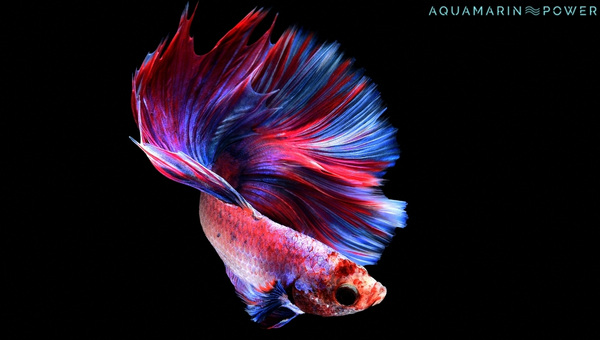
The Butterfly Betta female is not as aggressive as the male and is usually only aggressive towards other females.
Regarding human interaction, the Butterfly Betta is a very shy fish. They do not like to be handled and will often hide when someone tries to approach them.
However, they can become more comfortable around people with time and patience.
The best way to interact with them is to simply observe them. They are very curious fish and will often come up to the glass to check you out. If you want to hand-feed your fish, you can do so, but be very careful not to startle them.
When choosing them, choosing one with a calm personality is important. This will make it easier to care for your fish and will help to prevent aggression.
Butterfly Betta Care
The Butterfly Betta is not a complicated fish to care for.
They are hardy fish that can withstand a wide range of water parameters. They are also peaceful fish that can make good tank mates for other peaceful fish.
As with all bettas, they are best kept in their tank or with other peaceful fish that are not of the same species. This is because they can be quite aggressive during the mating season.
Keeping the tank clean can be time-consuming, but it is well worth the effort. A clean tank will help prevent disease and make your fish feel more comfortable.
Ensure that you siphon the gravel and clean the glass regularly. You should also do a water change of at least 25% weekly.
The diet of the Butterfly Betta is not complicated. They are omnivorous and will eat most types of food. You can feed them various foods such as flakes, pellets, live food, frozen food, and vegetables.
It is important to ensure that they are getting a well-rounded diet. You should also offer them a variety of foods to keep them interested and ensure that they get all the nutrients they need.
They are relatively easy to care for as long as you provide them with the proper diet and living conditions.
Here we will discuss everything you need to know about caring for your Butterfly Betta, including their tank size, diet, tank mates, and more.
Food & Diet
Butterfly Bettas are carnivores, and their diet should consist primarily of meaty foods. Some good options include:
- Live foods- such as brine shrimp and bloodworms
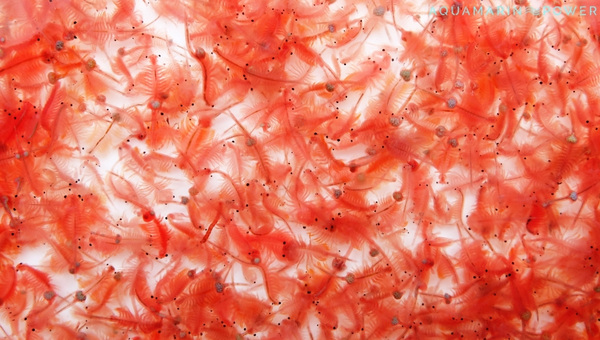
- Frozen foods- such as daphnia and krill
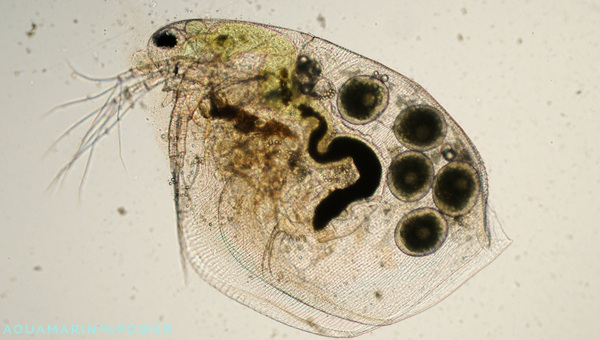
- Freeze-dried foods- such as bloodworms and tubifex worms
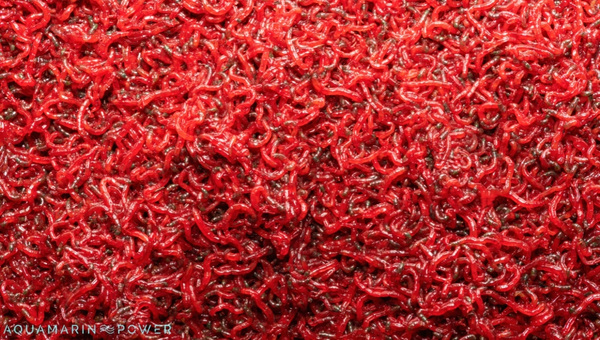
- Pellets or flakes designed for carnivores
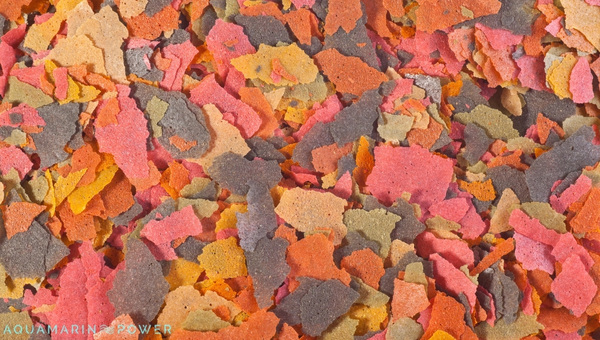
It is important to feed your fish various foods to ensure that they get all the nutrients they need. You should also avoid overfeeding, as this can lead to health problems.
Diet Foods To Avoid
There are a few foods that you should avoid feeding your Butterfly Betta. These include:
- Food that is high in fat: Fatty foods can cause problems such as obesity and liver disease.
- Foods high in sugar: Sugar can cause problems such as diabetes and weight gain.
- Food that is high in salt: Salt can cause problems such as dehydration and high blood pressure.
- Food that is high in chemicals: Chemicals can cause problems such as birth defects and cancer.
- Food that is moldy or rotten: Moldy or rotten food can cause problems such as food poisoning.
By avoiding these foods, you can help to ensure that your Butterfly Betta stays healthy and happy.
The Importance Of A Healthy Diet
A healthy diet is important for all animals, including Butterfly Bettas. A healthy diet helps to ensure that your fish gets all the nutrients they need to stay healthy and happy.
A healthy diet also helps to prevent diseases and other health problems. By feeding your Butterfly Betta a healthy diet, you can help them to live a long and happy life.
Feeding Schedule
How often you feed your Butterfly Betta will depend on their age and health. It is important to consult with a vet or breeder to determine the best feeding schedule for your fish.
Generally, it is best to feed young fish multiple times per day and adult fish once or twice daily.
Also, it is important to note that overfeeding can lead to health problems, such as obesity and liver disease. Therefore, it is important to only feed your fish as much as they can eat in a single sitting.
Butterfly Betta Tank Size
The minimum tank size for a Butterfly Betta is 5 gallons. However, if you plan to keep more than one fish, you will need a larger tank. It is also a good idea to have a larger tank if you want to add any plants or decorations.
The ideal tank size for a Butterfly Betta is 10 gallons. This will give them plenty of room to swim and explore. It will also allow you to add some plants and decorations.
You will need an even larger tank if you keep more than one fish. The general rule is that you should add 5 gallons for each additional fish. So, if you plan to keep three fish, you will need a 20-gallon tank.
Water Parameters
The ideal water temperature for a Butterfly Betta is 70°-75°F. The pH should be between 6.8 and 7.0. The hardness of the water is not as important as the other parameters, but it should be in the range of 5-20 DH.
It is important to test the water regularly to ensure that it is within the ideal range. If you notice any changes, you should make the necessary adjustments.
It is important to maintain high water quality in the tank. This can be achieved by regular water changes and using a filter. The frequency of the water changes will depend on the size of the tank and the number of fish.
Generally, you should do a water change of at least 25% every week. If you have a larger tank or more fish, you may need to do them more often.
The filter is an important part of the tank and should be changed regularly. The frequency of the changes will depend on the type of filter you are using. Generally, you should change the filter every 4-6 weeks.
Filtration
It is important to have a good filtration system in the tank. The filter will help to remove debris and waste from the water. It will also help to keep the water quality high.
There are a variety of filters on the market, and it is important to choose one that is suitable for the size of your tank. The filter should also be easy to maintain.
A good rule of thumb is to choose a filter that is rated for a tank that is twice the size of your own. So, if you have a 10-gallon tank, you should choose a filter that is rated for a 20-gallon tank.
You should also make sure that the filter has an adjustable flow rate. This will allow you to control the amount of water that is being filtered.
Some recommended filters for a Butterfly Betta tank are:
- The Fluval Aquatic Series 3-Stage External Canister Filter
- The Aqua Clear Power Filter
- The Marineland Penguin Bio-Wheel Power Filter
Substrate
Choosing a substrate that is safe for your Butterfly Betta is important. There are a variety of substrates on the market, and it is important to choose one that is suitable for the size of your tank.
You should also make sure that the substrate is easy to clean. This will allow you to keep the tank clean and free of debris.
Some recommended substrates for a Butterfly Betta tank are:
- The Fluval Plant and Shrimp Stratum
- The Aqua Culture Aquarium gravel
- The Zoo Med ReptiSand
Water Conditioners
It is important to provide a clean and safe environment for your Butterfly Betta.
You can achieve this by using an aquarium water conditioner.
There are a variety of water conditioners on the market, and it is important to choose one that is suitable for the size of your tank.
You should also make sure that the water conditioner is easy to use. This will allow you to keep the tank clean and free of debris.
Some recommended water conditioners for a Butterfly Betta tank are:
- The API Stress Coat+ Water Conditioner
- The Tetra AquaSafe Water Conditioner
- The Seachem Prime Water Conditioner
Plants
It is important to choose plants that are safe for your Butterfly Betta. There are a variety of plants on the market, and choosing ones suitable for your tank size is important.
You should also make sure that the plants are easy to care for. This will allow you to keep the tank clean and free of debris.
Some recommended plants for a Butterfly Betta tank are:
- The Anacharis Plant
- The Java Fern Plant
- The Hornwort Plant
Heating
It is important to provide a warm environment for your Butterfly Betta. The ideal water temperature is 70°-75°F.
You can achieve this by using an aquarium heater. There are a variety of heaters on the market, and it is important to choose one that is suitable for the size of your tank.
You should also make sure that the heater has an adjustable temperature setting. This will allow you to control the water temperature.
Some recommended heaters for a Butterfly Betta tank are:
- The Fluval E Series Aquarium Heater
- The Aqueon Submersible Aquarium Heater
- The Zoo Med AquaTherm Submersible Aquarium Heater
Lighting
It is important to provide a well-lit environment for your Butterfly Betta.
You can achieve this by using an aquarium light. There are a variety of lights on the market, and it is important to choose one that is suitable for the size of your tank.
You should also make sure that the light has an adjustable brightness setting. This will allow you to control the amount of light that is being provided.
Some recommended lights for a Butterfly Betta tank are:
- The Zoo Med AquaSun Aquarium Hood
- The Marineland Reef Capable LED Light
- The Aqua Culture LED Aquarium Kit
Fertilizers
It is important to provide a nutrient-rich environment for your Butterfly Betta.
You can achieve this by using an aquarium fertilizer. There are a variety of fertilizers on the market, and it is important to choose one that is suitable for the size of your tank.
You should also make sure that the fertilizer is easy to apply. This will allow you to keep the tank clean and free of debris.
Some recommended fertilizers for a Butterfly Betta tank are:
- The Seachem Flourish Tabs
- The API Leaf Zone Plant Food
- The Tetra Aqua Safe Plus Water Conditioner
Co2 Systems
It is important to provide a well-oxygenated environment for your Butterfly Betta.
You can achieve this by using an aquarium CO2 system. There are a variety of CO2 systems on the market, and it is important to choose one that is suitable for the size of your tank.
You should also make sure that the CO2 system is easy to use. This will allow you to keep the tank clean and free of debris.
Some recommended CO2 systems for a Butterfly Betta tank are:
- The Fluval Pressurized CO2 Kit
- The Aqua Culture CO2 Booster System
- The Pisces CO2 Regulator Kit
Decorations
It is important to choose decorations that are safe for your Butterfly Betta. There are a variety of decorations on the market, and it is important to choose ones that are suitable for the size of your tank.
You should also make sure that the decorations are easy to clean. This will allow you to keep the tank clean and free of debris.
Some recommended decorations for a Butterfly Betta tank are:
- The Penn-Plax Aquarium Decor
- The Exo Terra Water Dish
- The Zoo Med Repti Cave
Other Tank Accessories
There are a few other things that you will need to set up your tank. These include:
- Aquarium Thermometer: This will help you to keep the tank at the correct temperature.
- Aquarium Air Pump: This will help to provide a well-oxygenated environment.
- Aquarium Test Kit: This will help you to monitor the water quality.
- The Fluval Edge algae magnet: This will help you to remove algae from the tank.
These are just a few things you need to set up your tank. For more information, please consult an expert.
Water Changes
It is important to perform regular water changes to maintain the water quality in your tank. Water changes also help to remove any build-up of toxins in the water.
It is recommended to perform a water change every two weeks. It also helps to add a water conditioner to the water before adding it to the tank. This will help to remove any harmful chemicals from the water.
To change the water, you will need:
- A clean bucket: This bucket should be dedicated to aquarium use only.
- A gravel vacuum: will help remove any debris from the gravel.
- A water conditioner: This will help to remove any chlorine or chloramine from the tap water.
The steps to changing the water are:
- Remove the lid from the tank and set it aside.
- Using the gravel vacuum, remove about 25% of the water from the tank.
- Discard this water in a safe place. Do not pour it down the drain.
- Fill the clean bucket with tap water and add the water conditioner.
- Stir the water to mix in the water conditioner.
- Slowly pour the conditioned water into the tank.
- Replace the lid on the tank.
- Observe the fish for any signs of stress.
Cleaning The Tank
It is important to keep the tank clean to maintain water quality and prevent the spread of disease.
The tank should be cleaned every two weeks. To clean the tank, you will need:
- A clean sponge: This sponge should be dedicated to aquarium use only.
- A clean cloth: This cloth should be dedicated to aquarium use only.
The steps to cleaning the tank are:
- Remove the lid from the tank and set it aside.
- Using the clean sponge, wipe down the inside of the tank.
- Rinse the sponge in clean water and wring it out.
- Using a clean cloth, wipe down the outside of the tank.
- Rinse the cloth in clean water and wring it out.
- Replace the lid on the tank.
- Observe the fish for any signs of stress.
Cleaning The Filter
It is important to keep the filter clean to maintain water quality and prevent the spread of disease.
The filter should be cleaned every month. To clean the filter, you will need:
- A sponge is used to wipe down the inside of the filter.
- Filter media is used to remove debris and waste from the water.
The steps to cleaning the filter are:
- Remove the filter from the tank and set it aside.
- Using the sponge, wipe down the inside of the filter.
- Rinse the sponge in clean water and wring it out.
- Soak the filter media in a bucket of clean water for about 15 minutes.
- Rinse the filter media in clean water and wring it out.
- Replace the filter media in the filter.
- Put the filter back in the tank.
- Observe the fish for any signs of stress.
Testing The Water
It is important to regularly test the water in your tank to maintain water quality and prevent the spread of disease.
You should test the water at least once a week. To test the water, you will need:
- Aquarium test kit: This will help you to monitor the water quality.
The steps to testing the water are:
- Remove a small water sample from the tank using a clean cup.
- The aquarium test kit will test the water for ammonia, nitrites, and nitrates.
- Write down the results of the test.
- Compare the test results to the recommended levels for a healthy aquarium.
- If the levels are not within the recommended range, take steps to correct the problem.
- Repeat the test in a few days to check that the levels have stabilized.
Common Possible Diseases
There are a few common diseases that can affect Butterfly Bettas. These diseases can be caused by poor water quality, stress, or injury.
The diseases are:
- Ich
- Fin rot
- Dropsy
- Columnaris
- Swim bladder disease
Signs That Your Butterfly Betta Is Sick
There are a few signs that you can look for to determine if your Butterfly Betta is sick.
These signs include:
- lethargy
- loss of appetite
- hiding
- increased breathing
- redness or swelling
- white patches on the body
- ragged or disintegrating fins
- floating upside down
If you notice any of these signs, it is important to take your fish to the vet for a checkup. Early diagnosis and treatment are essential for a successful outcome.
Preventing Diseases
The best way to prevent diseases in Butterfly Bettas is to maintain a clean and healthy environment. To do this, you should:
- Test the water regularly and ensure the levels are within the recommended range.
- Perform regular maintenance on the tank, such as cleaning the filter and vacuuming the gravel.
- Keep an eye on your fish and look for any signs of illness.
- Take your fish to the vet for a checkup if you notice any signs of illness.
- Feed your fish a healthy diet and provide them with plenty of clean water.
By following these simple tips, you can help to ensure that your Butterfly Bettas stay healthy and disease-free.
Treatment And Medications Of Diseases
As with any pet, taking your Butterfly Betta to the vet for a checkup is important if you notice any signs of illness. The vet can diagnose the problem and recommend the best course of treatment.
A few different medications can be used to treat diseases in Butterfly Bettas. These include:
- Antibiotics: Antibiotics can be used to treat bacterial infections.
- Anti-fungals: Anti-fungals can be used to treat fungal infections.
- Parasiticides: Parasiticides can be used to treat parasitic infections.
It is important to follow the directions on the medication and only use the dosage that the vet recommends. Over-medicating your fish, can cause more harm than good.
How To Choose A Healthy Butterfly Betta
When choosing a Butterfly Betta, it is important to select a fish that is healthy and free of disease. To do this, you should:
- Look for a fish with bright, vibrant colors.
- Check the fish for any signs of illness, such as redness or swelling.
- Ask the breeder or pet store about the health of the fish.
- Have the fish examined by a vet before taking it home?
By following these simple tips, you can help to ensure that you choose a healthy Butterfly Betta.
Tank Mates
The Butterfly Betta can be kept with other peaceful fish, but because of their aggressive nature, they are best kept alone. If you do choose to keep them with other fish, it is important to choose tank mates that are similar in size and temperament.
Some good tank mates for them include:
- Neon Tetras
- Guppies
- Platies
- Mollies
- Kuhli Loaches
- Corydoras Catfish
- Plecostomus Catfish
- Otocinclus Catfish
- Ghost shrimp
These are just a few of the many possible tank mates for the Butterfly Betta. When choosing tank mates, it is important to avoid aggressive or territorial fish.
Also Read: Clown Loach Care: Appearance, Tank Mates, Lifespan, Breeding & All
Fish To Avoid
- Angelfish
- Oscar Fish
- Green Terror
- Jack Dempsey
- Arowana
- Piranha
- Lionfish
- Triggerfish
- Pufferfish
By avoiding these fish, you can help to prevent aggression and fighting in your tank.
Advantages Of Having Butterfly Betta In Your Tank
The first advantage is that they are very beautiful fish. They have long fins and bright colors that add to your aquarium’s aesthetic.
Another advantage is that they are relatively easy to care for. They are not as delicate as some other fish and can be a good choice for beginner fish keepers.
A third advantage is that they are peaceful fish. They will not bother other fish in your tank and can actually help to reduce aggression.
Disadvantages Of Having Butterfly Betta In Your Tank
The first disadvantage is that they are very shy fish. They can be easily startled and may not come out much to interact with you.
Another disadvantage is that they are aggressive fish. During the breeding season, they will often fight with each other over territory.
A third disadvantage is that they are not good tank mates for other fish. Because of their aggressive nature, they should be kept alone or with other peaceful fish.
Wrapping Up
As you can see, there are both advantages and disadvantages to keeping Butterfly Bettas in your tank. However, if you take the time to care for them properly.
They can be a great addition to your aquarium. They are beautiful fish that are relatively easy to care for and can help to reduce aggression in your tank.
I hope this article was helpful and that you now understand these amazing fish better.
Thanks for reading!



